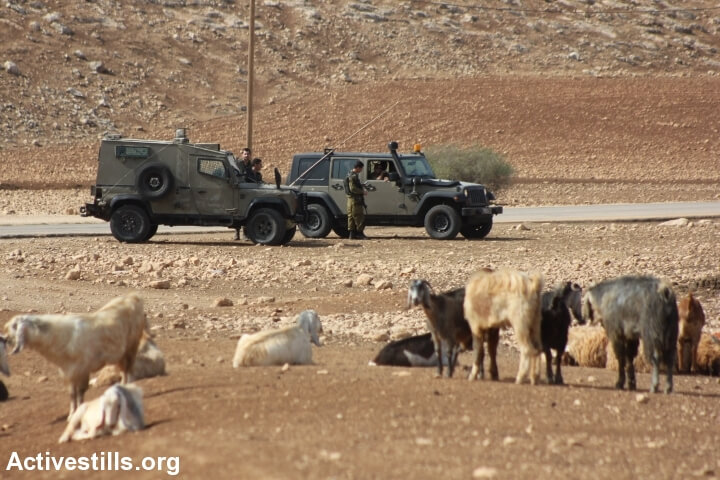Vulnerable economy
 The Jordan Valley area heavily utilizes its agricultural prospects, providing 35% of the total produce distributed to the Palestinians. It produces 60% of the vegetables, 40% of the citrus and 100% of the bananas. This agricultural success is associated with the area’s unique location below sea level, which is likened to a giant greenhouse where crops ripe early in the winter. Life for Palestinians in what should be the breadbasket for the West Bank has been made increasingly difficult by the Israelis. In a 2009 survey by Save the Children just 4% of farmers said they didn’t face obstacles getting their produce to market.
The Jordan Valley area heavily utilizes its agricultural prospects, providing 35% of the total produce distributed to the Palestinians. It produces 60% of the vegetables, 40% of the citrus and 100% of the bananas. This agricultural success is associated with the area’s unique location below sea level, which is likened to a giant greenhouse where crops ripe early in the winter. Life for Palestinians in what should be the breadbasket for the West Bank has been made increasingly difficult by the Israelis. In a 2009 survey by Save the Children just 4% of farmers said they didn’t face obstacles getting their produce to market.
Agricultural Barriers Israel imposes on Palestinians in the Jordan Valley
- Complete dependence on Israeli production components, such as fertilizers, seeds and irrigation networks;
- it is difficult to find Palestinian alternatives to Israeli goods, meaning that Israeli companies control price and quality.
- Continued confiscation of agricultural land to complete the eastern segregation zone and expand settlements and closed military zones.
- Dumping the Palestinian market with Israeli goods produced in settlements, especially during peak production, in order to eliminate Palestinian products that may supply the local markets.
- Demolition and destruction of infrastructure, such as curettage of agricultural lands, demolition of agricultural barracks and retention of walls, stone terraces and irrigation networks.
- Prevention of building new wells, reconditioning existing wells and digging deep wells near springs and other Palestinian wells, which prevents water from running to Palestinian fields. The Israeli water company, Mekorot, monopolizes this work.
- Destruction of livestock sector by imposing high fines on shepherds who let their sheep cross an Israeli zone from which Palestinians are forbidden.
- Prevention of land owners, who do not have a Jordan Valley residential address on their ID, from reaching or cultivating their lands.
- Closure of Arab, Israeli and regional markets to Palestinian farmers.
Poverty and Unemployment
As a result of all of these restrictions and oppressive policies, Palestinians in the Jordan Valley suffer high rates of poverty and unemployment. The majority of Palestinians in the Jordan Valley live under the poverty line. In 2006, unemployment rates reached 21% in Jericho and Tubas districts, and 20.5% were Palestinian Authority employees who did not receive salaries. Furthermore, despite its agricultural advantages, approximately 53% of Jordan Valley residents in Jericho and Tubas districts were food insecure in 2006, up 10% from 2005.
Occupation Procedures that Inhibit Tourism
- Strict procedures on checkpoints leading in/out of the valley;
- Isolation and complete Israeli control of Jericho
- Military closure and/or destruction of some tourist sites
- Ongoing Israeli military training and explosions, leaving some sites, such as the Greek Monastery of Hijla, damaged;
- Prevention of Israeli drivers and tourist guides from entering Palestinian areas, leaving tourists with no choice but to walk on foot or avoid the area;
- Prevention of Palestinians from holding religious or cultural festivals;
- Closure of Wadi el-Qilt Road, which leads to the Monastery of St. George;
- Prevention of Palestinian Authority employees from entering Jericho to watch and document Israeli destruction of archeological sites and theft of archeological pieces;
- Cancellation of visits to Jericho and its archeological sites from Israeli and international tourist programs;
- Construction of the Separation Wall, which prevents geographical continuity between the three main tourist centers (Jerusalem, Bethlehem and Jericho);
- Halt in investment after the second Intifada;
- Halt in all projects between the Palestinian Ministry of Tourism and Antiquities and donor countries and organizations after the Palestinian legislative elections. Projects include annual diggings, reconditioning and rehabilitation of infrastructure.






